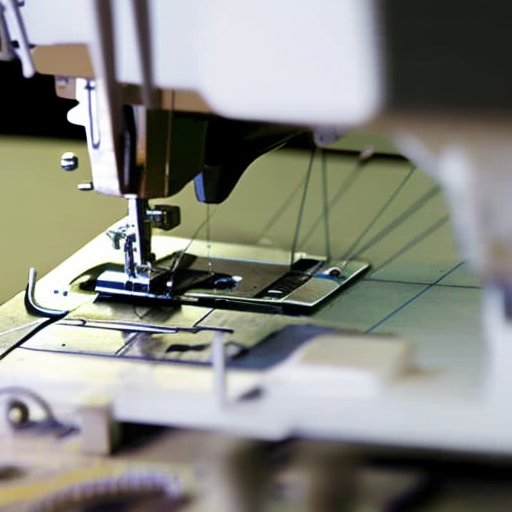 sewing machine” width=”500″ height=”333″>
sewing machine” width=”500″ height=”333″>
Introduction
Modern sewing machines are a marvel of engineering, revolutionizing the way we create garments, home decor, and textiles. Understanding the various techniques and functions of a sewing machine is essential for anyone interested in sewing or pursuing a career in fashion design or textile arts.
Stitch Types
There are several stitch types that one can achieve using a sewing machine:
- Straight Stitch: The basic stitch used for most seams and sewing projects.
- Zigzag Stitch: Ideal for finishing raw edges, decorative stitching, and stretch fabrics.
- Buttonhole Stitch: Used to create buttonholes with various shapes and sizes.
- Overlock Stitch: Also known as a serger stitch. It trims and finishes the fabric edges simultaneously for a clean, professional look.
- Blind Hem Stitch: Perfect when you want to create invisible hemlines.
Machine Features
Understanding the features and elements of a sewing machine will help users utilize them to their full potential:
- Bobbin: The case that holds the lower thread.
- Presser Foot: Secures the fabric in place while stitching.
- Needle: Comes in different sizes and types, suitable for various fabrics and stitches.
- Tension Control: Adjusting the tension ensures even stitching without loose or tight threads.
- Thread Cutter: Integrated cutters make trimming threads quick and easy.
- Feed Dogs: These metal teeth under the presser foot move the fabric through the machine during sewing.
- Reverse Stitch: A backward stitch that reinforces the start and end of a seam.
Proper Machine Maintenance
To keep your sewing machine functioning smoothly, regular maintenance is crucial:
- Cleaning: Remove dust, lint, and loose threads from the machine with a small brush or vacuum attachment.
- Oiling: Follow the manufacturer’s instructions to oil the machine’s moving parts.
- Tension Adjustment: Periodically check and adjust the tension for precise stitching.
- Needle Replacement: Replace the needle after every project or if it becomes dull or bent.
- Keep Covered: When not in use, use a dust cover or store the machine in a case to protect it from debris.
Conclusion
Mastering the techniques of a sewing machine grants you the ability to bring your creative vision to life. Investing time in learning about different stitches, understanding the machine’s features, and performing regular maintenance will ensure years of enjoyable sewing experiences.
So go ahead, unleash your creativity, and let the sewing machine be your trusted companion on your stitching journey!





This looks like a great post on sewing machine techniques!
Katie Watters: Absolutely! I’m really looking forward to learning some of these techniques.
This is great! Learning different techniques for using a sewing machine can make a big difference in how your end project turns out. I’m excited to see what tips are shared here and can’t wait to try out some of them.